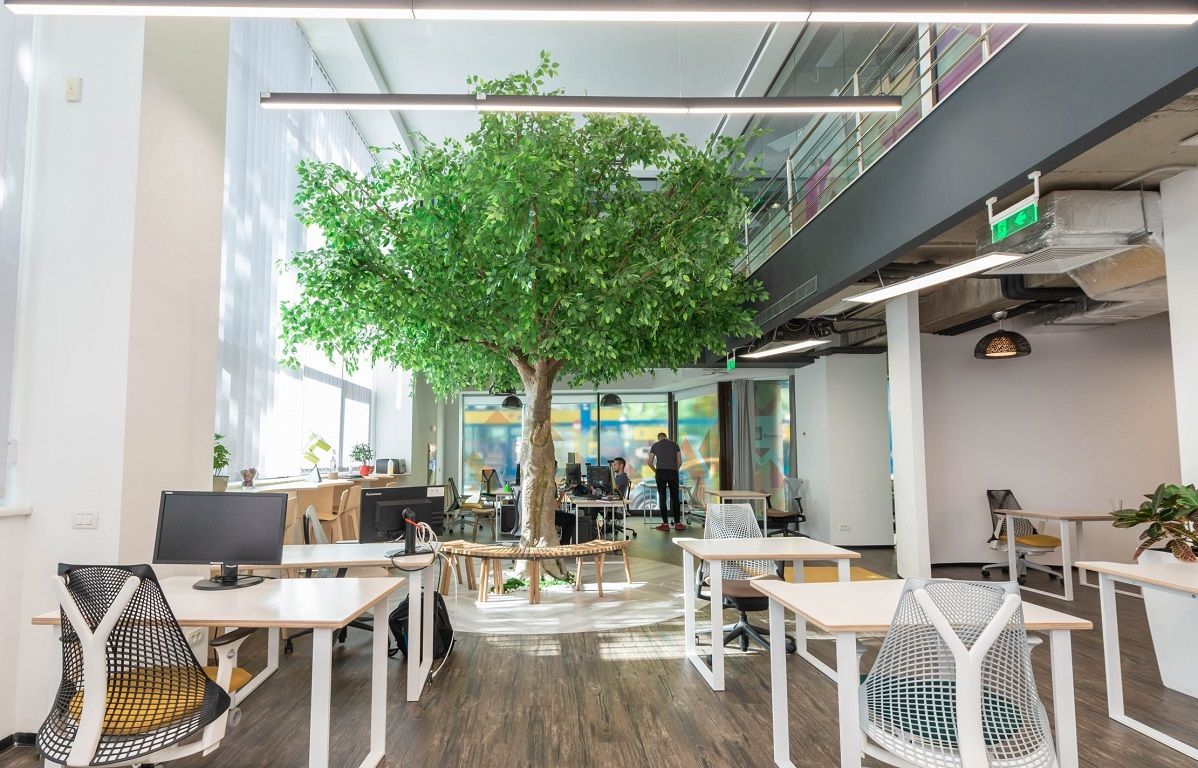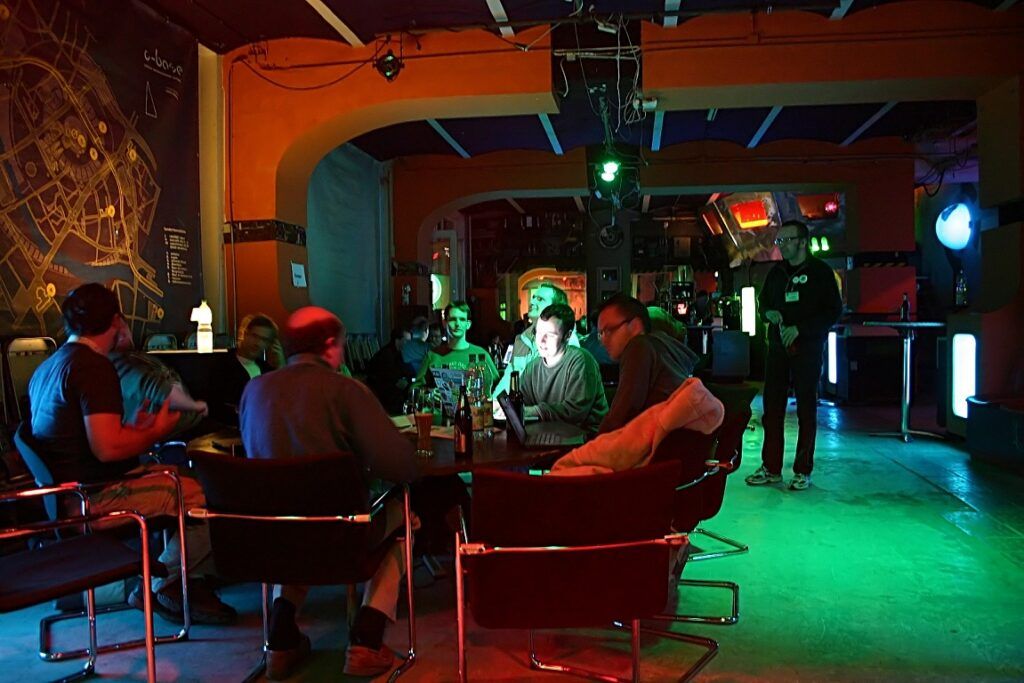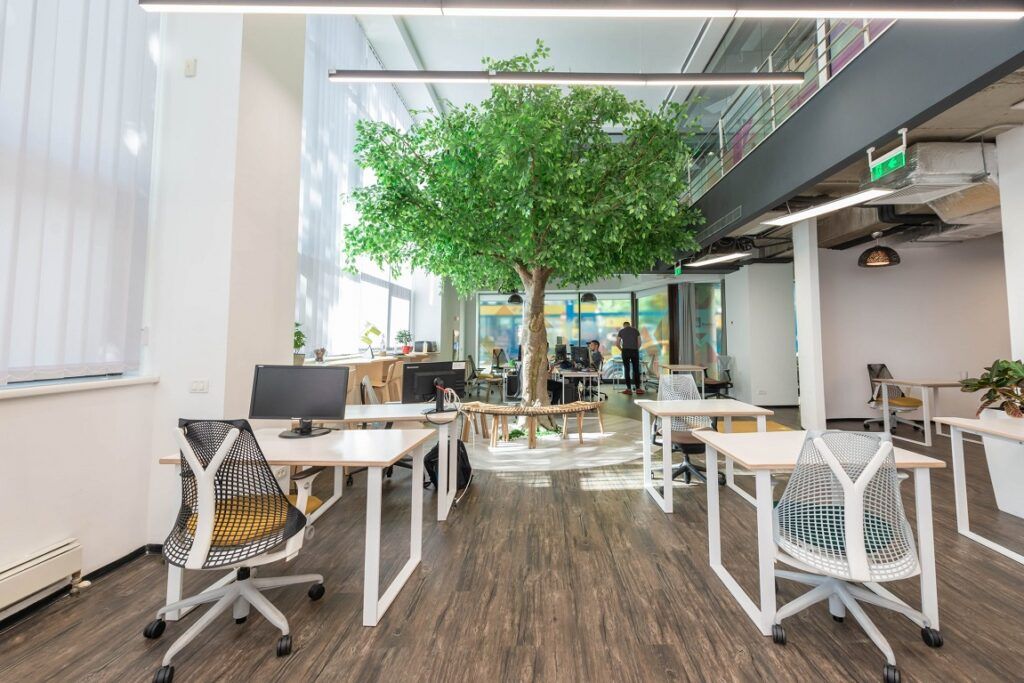
The History of Coworking or the Accelerated Revolution of Flexible Workspaces

19 April, 2022
Share this article
The concept of coworking, as we know it today, is a recent one, but it has evolved in a short time at a spectacular pace and continues to do so. This means that we are among those who are currently writing an important chapter in the history of coworking, which surely still has many surprises to offer.
Looking back on the thread of time, we can identify early initiatives of flexible workspaces since the beginning of the XXth century, but, as we will see, the year 2005 is considered to be the starting point of modern coworking. Here’s how this concept was born, transformed and consolidated over time:
The first collaborative spaces attempts
- The beginning of the XXth century – Sculptor Alfred Boucher (1850–1934) created in the Montparnasse district of Paris, a residence for young artists where they could live and work together. La Ruche provided artists with access to models and a common exhibition space.
- 1929 – During the financial crisis of 1929, the concept of associated offices appeared in the U.S. as a cost-cutting strategy. They provided common office spaces for professionals in various fields.

The rise of informatics. Phases leading up to modern coworking
- 1995 – In Berlin, 17 IT engineers created the first hackerspace, C-Base, which was a space where computer enthusiasts gathered, collaborated, shared knowledge and equipment.
- 1999 – The term coworking is used for the first time. Bernard DeKoven, a game designer, writer and lecturer, launches this name as a way of working that encourages collaboration and flexibility in labour relations.
– A New York-based software company opens 42West24, a flexible office space that could be rented in the short term. Although it does not focus on the idea of community, this initiative represents an important step towards today’s coworking spaces.
- 2002 – In an old factory in Vienna, the Schraubenfabrik entrepreneurial centre opens, where freelancers from several fields could gather and collaborate, avoiding working from home and benefiting from the advantage of meeting other professionals.
The emergence of modern coworking
- 2005 – On August 9, 2005, the San Francisco Coworking Space opened, the first official coworking space, as we understand this concept today. The founder, an IT engineer named Bradley Neuberg, started from the idea of a collective workspace that would combine the freedom to work on your own with the feeling of community and structure offered by working with others.
The space was located in the Spiral Muse centre, where Brad was allowed access twice a week for a monthly fee of $300. It wasn’t until two months later, after further promoting his idea, that the first coworker joined him, an athlete and start-up developer.
- 2006 – Due to growing demands, San Francisco Coworking relocates as the Hat Factory, the first full-time coworking space in the history of modern coworking.
– Brad Neuberg and other enthusiasts of the concept encourage its takeover and improvement by as many businessmen as possible. In San Francisco and New York, the first large coworking spaces appear, some of them later expanding at the level of international chains.
– Since 2006, there follows a long period in which the number of coworking spaces and community members has almost doubled from one year to the next.
Major steps towards the present
- 2007 – As the concept grows in popularity, more and more coworking spaces open up. Their number throughout the world reaches the threshold of 75.
- 2008 – Coworking visas appear, which allow members of certain coworking networks free access to other spaces included in the agreement. This fosters the development of international coworking communities.
– The number of official coworking spaces increases up to 160 worldwide.
- 2009 – The first book on coworking was launched: “I’m Outta Here: How Coworking is Making the Office Obsolete”. The study follows the origins and evolution of the concept and encourages changing our perception about working from a fixed office.
- 2010 – 5 years after the official opening of the first coworking space, August 9 became the international coworking day.
– Deskmag appears, the first online magazine dedicated to coworking.
- 2012 – An initiative from 2008 to organise meetings and discussions on the topic of coworking (known as SXSW meetings) is taken over and transformed into a large-scale movement: Global Coworking Unconference Conference. The tradition continues to this day, with over 32 international conferences to date.
– The threshold of 2000 coworking spaces worldwide has been reached.
- 2016 – More and more large organisations, such as HSBC, KPMG, Microsoft, IBM, start offering their employees the facility to work from coworking spaces.
- 2018 – London becomes the capital of coworking, with more spaces than cities like New York, San Francisco and Berlin.
- 2019 – The number of coworking spaces is estimated at 19000 worldwide, with approximately 3 million users.
- 2021 – The top countries by number of coworking spaces is led by the US, followed by India, the UK, Spain and Germany.

Where are we heading to?
Currently, there is an abundance of coworking spaces across the globe and it is expected that their number will reach over 40000 by the year 2024. In addition to the big players of the market, there are many participants who own few important coworking spaces locally, being leaders in their cities or regions. At the same time, we cannot underestimate the major contribution of single or mixed locations, such as coworking facilities offered by cafes, hotel receptions, etc.
Meanwhile, the history of coworking has definitely taken a new path in the last two years. We may not yet have a complete picture of what the pandemic meant for the mass popularisation of coworking, but one thing is certain: if during its early years this concept was embraced mainly by freelancers and digital nomads, we are now witnessing its accelerated implementation among organisations of all sizes. More and more companies are sensing the specific opportunities of hybrid work, joining the veterans in writing the history of modern coworking.
How do you participate in the writing of the history of coworking?
Uncategorized
Remote
Spaces
Work
Keep up to date with our most recent articles, events and all that Pluria has to offer you.
By subscribing to the newsletter you agree with the privacy policy.

In the increasingly exhausting rhythm of modern life, chronic stress has become one of the most harmful factors affecting society at a wide scale. In the face of this challenge, we have two options: to continue to unconsciously run our thought patterns that give power to toxic reactions or to use the extraordinary capacity of […]
29 June, 2022

The concept of coworking, as we know it today, is a recent one, but it has evolved in a short time at a spectacular pace and continues to do so. This means that we are among those who are currently writing an important chapter in the history of coworking, which surely still has many surprises […]
19 April, 2022

No matter how many years have passed since your last professional accreditation or how much experience you have gained in the meantime, your skills’ development is a process based on continuous learning. We cannot build high-performing organizations without well-informed employees and without everyone’s involvement in the unlimited exercise of knowledge improvement. In the context of […]
02 March, 2022